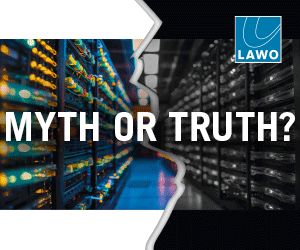Understand viewer-watching trends with multiscreen monitoring to score big returns, says Arman Aygen Traditional broadcast is a one-way communications system that was used to set trends and create needs. For many decades “Mad Men” style marketing had thought-leaders influencing audience- watching habits. With the advent of the Internet and the availability of content on demand, […]
 Understand viewer-watching trends with multiscreen monitoring to score big returns, says Arman Aygen
Understand viewer-watching trends with multiscreen monitoring to score big returns, says Arman Aygen
Traditional broadcast is a one-way communications system that was used to set trends and create needs. For many decades “Mad Men” style marketing had thought-leaders influencing audience- watching habits. With the advent of the Internet and the availability of content on demand, something drastic started happening. The days of TV slavery are over people communicate in real-time and are taking control of the content popularity; the game is changing.
Viewership measurement revolutionised
Until now, traditional broadcasting has only had access to high-level feedback on the consumption of TV content. Several companies such as the UKs BARB, Frances Médiamétrie or the US Nielsen provide such services usually based on a statistically significant pole of the subscriber base. These systems have been refined over several decades and are now very finely tuned. They are powerful enough, for example, to enable a TV channel to adapt the script of a series during a season to better match to viewers reactions and expectations.
Ratings are also used to terminate unpopular shows. But these systems, from the dawn of audience measurement, cannot be exhaustive and worse, the information comes back late and carries some statistical error margins.
Sampling
However deep the analysis goes, these efforts have had two fundamental limitations. Firstly, they are based on a sampling approach with a constant risk of the sample being poled becoming non-representative of the whole.
This situation is getting trickier still with the advent of long-tail content, enabled by global players like Amazon or NETFLIX. Content providers can no longer capture all of the trends that are emerging by using only a subset of the viewers, making it very difficult to fully understand those micro-phenomenon.
Real-time
The second limitation throws even more severe limitations on past audience measurement solutions. Until very recently, content marketers have adapted their future offerings to better suit the demand they understood from past trends. The time lag between understanding past trends and implementing new offers has slowly been shortening. It is still, however, mostly a three-phase process: measure analyse adapt; with days or at best hours between the phases.
Social TV is no longer the reserved domain of tech-savvy early-adopters, as mass audiences are becoming more aware of live tweets, for example. Reality shows are not the only ones reacting live to what the audience wants. Taking a step back, social media is forcing any content-related service to not only react to the audience perceptions, but to do so in real-time. With IP video delivery, real audience feedback is finally available, bringing you facts not hype.
Multi Device
With the proliferation of IP and viewing content on multiple devices, broadcasters must also work within a multiscreen environment. Because more devices have storage capacity, that also means capturing usage data from as many devices as possible. People behaviour, usage habits and content interest will vary depending on the device chosen for accessing TV.
An Opportunity for Network Operators?
Network operators that are eager to get back into the value chain have an opportunity to understand viewer watching trends, based on what show is popular on which device and cross correlate the common points between them (duration, type, time). Audience segmentation is getting more precise with watching habits appearing across the traditional gender line, but now into more granular age- groups, device ownership, geography, etc.
Big Data Challenges
There are at least two separate challenges to resolve to get into the “Big Data” game. Firstly, the data on video and related viewer behaviour must be captured. This challenge might seem trivial or herculean, depending on where you sit in the value chain.
Once the data is available, the next step is to access it from within what used to be called a data warehouse.
Todays “Big Data” relies on some new technologies like Storm used by Twitter, the Apache Hadoop project, or Google Prediction API. With such technologies, it becomes possible to number-crunch vast volumes of data in near real-time. In the case of the big web players like Google or Twitter, “vast” means multiple petabytes.
Although this challenge may seem daunting, new cloud-based architectures will make it much simpler to implement.
The Big Data Promise
So what can broadcasters or network operators gain from having information that reports back on content consumption with a “Big Data” approach?
The most important goal is to enable near real-time decisions to be taken based on subscribers multi-screen behaviour. This might require the massively parallel execution of sophisticated queries. But, in the end, it will unleash more powerful search and navigation using multiple data sources. An immediate beneficiary of this approach would be the operators content recommendation service. Improving this enhances the customer experience and raises Average Revenue per User (ARPU). Once you can follow real-time behaviour, on the family living room TV, for instance, it is only a matter of “when” not “if” we bring truly personalised advertising that is more enjoyable and profitable to the people in front of the TV.
We are getting closer to real-time data analytics. It is surprising, even counter-intuitive, that at the same time the complexity is increasing, the cost of making actionable sense out of all this data is decreasing.
It is not a race for quantity, as content owners already have more data than they can deal with. But it is about having
smarter data.
The ecosystem from content producer
to end-consumer will be modified as Big Data brings its benefits to TV too. But as with any disruptive technology, those that embrace it are in a world of opportunities.
Arman Aygen, Business Development Manager, EMEA for Mariner, a major player in IP video monitoring for multiscreen networks.









































































